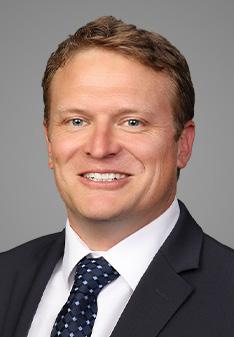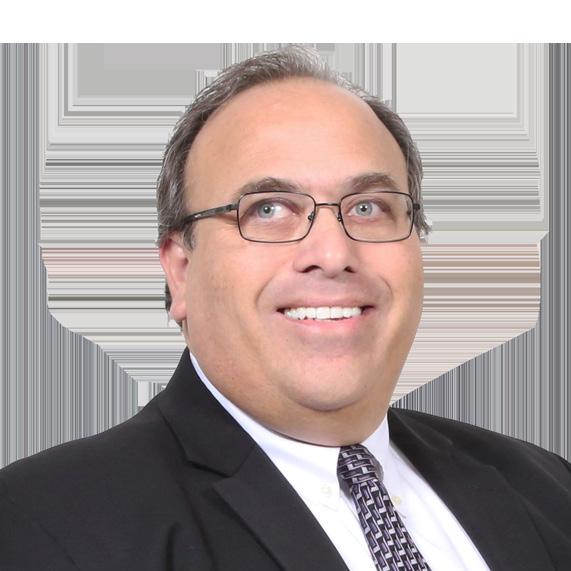Fire Watch









In a case handled by Jeff Stockley and James Oldendorph of our Los Angeles Office, a hearing officer upheld the demotion of a Fire Department’s IT Manager.
After the Department received a volume of complaints over the years alleging a hostile work environment under the Manager’s leadership, the Department hired an attorney to investigate. The investigation found that as the head of IT, the Manager failed to provide sufficient, effective, or responsible leadership. Rather, the Manager allowed a hostile work environment to grow and fester both by his own actions and omissions, and by failing to address the behavioral issues of two of his direct subordinates who also supervised many others. The Manager allowed this to happen despite employees submitting numerous complaints about the work environment and speaking directly to him. By letting the hostile work environment persist, workplace dysfunction took over and resulted in employees crying at work, taking stress leave, dreading coming to work, and fearing retaliation if they complained.
The hearing officer found that the Manager’s failure to address the known and documented behavioral issues in his division supported his demotion. The hearing officer upheld the demotion and, in fact, added that she would have fired the Manager if she could. Additionally, the hearing officer recommended that the Manager not be allowed to supervise any employees throughout the remainder of his career with the Department.
To view these articles and the most recent attorney-authored articles, please visit: www.lcwlegal.com/news
• Kudos to LCW attorney Alexander Volberding for his many recent appearances in the media circuit! His latest publications/interviews focused on the presently popular topic of strikes and what public agencies need to know in order to be prepared. He was featured in Spectrum News 1, PSHRA’s Public Eye Podcast, KNX-AM, and Our Weekly Magazine.

Patrick Skahan, a Senior Counsel in the Los Angeles office, provides advice and counsel to our public agency and nonprofit clients in all matters pertaining to business and facilities, employment law, discrimination, and litigation.


Simone Del Barco, an Associate Attorney in the Los Angeles office, provides advice and counsel to our clients in all matters pertaining to labor and employment law with experience in all phases of litigation.


Phillip Murray, an Associate Attorney in our Sacramento office, provides labor, employment, and education law expertise to our clients. Prior to joining LCW, Phillip served at the California Correctional Peace Officers Association where he represented correctional peace officers in a variety of proceedings including interrogations, reviews, and appeals.
Scott Fera, a Senior Counsel in our Sacramento office, provides advice, counsel, and trainings to our public agency, public and private education and nonprofit clients in a wide range of matters spanning from labor and employment, business and facility use, nonprofit governance, Title IX, and student issues.

Ronald Hittle was an at-will employee of the City of Stockton and served as the City’s Fire Chief from 2005 through 2011. Throughout his tenure, Hittle’s superiors thought he exhibited a lack of judgement. First, Hittle attended a religious leadership event on City time and in a City vehicle. The City received anonymous complaints that Hittle gave members of a “Christian coalition” in the Fire Department preferable treatment. Finally, Hittle also had a variety of unreported conflicts of interest, some regarding his co-ownership of a vacation home with the president of the fire union. Hittle was counseled, but was recalcitrant and reluctant to change.
The City hired an outside investigator to look into the allegations against Hittle. This investigation found that Hittle had violated City policies and procedures. The City offered Hittle a Battalion Chief position until he reached age 50 and could retire. Hittle refused and then stated he would be retaining legal counsel and bringing a lawsuit. The City then served a notice of intent to terminate. Hittle later claimed his Skelly meeting was a “sham” because he could not call witnesses or obtain evidence from his City email.
After the City released Hittle, he sued alleging employment discrimination under Title VII and the California Fair Employment and Housing Act (FEHA). The district court granted the City’s motion for summary judgment. Hittle appealed to the Ninth Circuit Court of Appeals.
Courts analyze Title VII and FEHA claims of discrimination using the McDonnell Douglas framework. Under this framework, an employee may establish a prima facie case by demonstrating: (1) membership in a protected class; (2) qualifications for the job; (3) an adverse employment action; and (4) similarly situated employees outside of the employee’s protected class were treated more favorably, or other circumstances surrounding the adverse employment action that give rise to an inference of discrimination.
An employee may demonstrate an inference of discrimination through comparison to similarly situated individuals, or any other circumstances surrounding the adverse employment action that support an inference of discrimination. If the employee provides sufficient evidence of a prima facie case, the employer must state a legitimate, nondiscriminatory reason for the challenged actions. If the employer does so, the employee must show that the proffered nondiscriminatory reason is pretextual.
Alternatively, an employee can prevail merely by showing direct or circumstantial evidence of discrimination without using the McDonnell Douglas framework. At the summary judgment stage, an employee can also show direct or circumstantial evidence of discrimination.
Hittle offered the following examples of alleged direct evidence of discriminatory animus. First, the City had referred to Hittle as being part of a “Christian coalition” and a “church clique.” The City responded that the anonymous complaints about Hittle had used and created the term “Christian coalition.” The Court noted that an employer’s repetition of another’s pejorative term does not provide evidence of the employer’s animus, but rather shows concerns about other persons’ perceptions.
Hittle then pointed to the fact that the City informed him that he was not permitted to “favor one religion over another.” The Court stated that these statements were not direct evidence of discrimination. Rather, they reflected the City’s legitimate concern that it could face liability if it favored certain employees based on religion.
Hittle alleged that his notice of intent was direct evidence of discrimination because of its repeated references to the leadership event that Hittle attended on City time as a “religious event.” The Court noted that the notice relied on the findings in the investigation report, which concluded that Hittle attended a two-day event on City time that did not benefit the City because it was not the sort of leadership conference aimed at public sector leadership, and that Hittle approved three department employees to attend on City time. The references to the “religious event” were to show the City’s legitimate non-discriminatory concerns about attending the event on City time
and the lack of benefit to the City, and did not show religious animus.
Finally, Hittle contended that the City described Hittle’s attendance at the religious event as exercising “poor judgment” and as “inappropriate activity” simply “for Hittle’s own personal interests.” The Ninth Circuit reiterated that the City had legitimate, nondiscriminatory reasons to be critical of Hittle using City resources to attend an event for his personal benefit.
Hittle also pointed to circumstantial evidence he believed showed discriminatory animus. Hittle was told that if he sued the City, he would face a long, expensive legal battle. The Court found that this comment did not suggest any religious animus because there was no evidence that anyone discussed religion at this meeting.
The Court noted that Hittle had no evidence that his superiors made any remarks that demonstrated their own hostility to religion, because they focused on Hittle’s misconduct and how his attendance at the religious leadership conference did not benefit the City. The Court dismissed the appeal.
Hittle v. City of Stockton, 2023 U,S. App. LEXIS 20114 (9th Cir.).
Note: This case indicates that merely quoting a third party’s discriminatory remarks is not necessarily discrimination when the employer’s real issue is the public perception regarding an employee’s misconduct.
Kristina Raines and Darrick Figg, sued on behalf of themselves and a class of conditional offer of employment recipients. They alleged that they received offers of employment that were conditioned on pre-employment medical screenings that U.S. Healthworks Medical Group (USHW) performed. USHW conducted the medical screens as agents of the prospective employers. Raines and Figg claimed that USHW violated the California Fair Employment and Housing Act (FEHA) by requiring job applicants to complete a written health history questionnaire that included numerous questions that had no bearing on the applicant’s ability to perform job functions.
Government Code Section 12940 of the FEHA makes it an “unlawful employment practice” for an employer of five or more persons “to make any medical or psychological inquiry of an applicant.” The FEHA only allows these inquires “after an employment offer has been made but prior to the commencement of employment duties, provided that the examination or inquiry is job related and consistent with business necessity and that all entering employees in the same job classification are subject to the same examination or inquiry.”
The federal district court dismissed the FEHA claim, finding that FEHA does not impose liability on agents of an employer. Raines and Figg appealed the dismissal to the U.S. Court of Appeals for the Ninth Circuit.
The Ninth Circuit heard oral argument and then asked the California Supreme Court to answer this question: “Does California’s [FEHA], which defines ‘employer’ to include ‘any person acting as an agent of an employer,’ …, permit a business entity acting as an agent of an employer to be held directly liable for employment discrimination?”
The California Supreme Court answered yes. The FEHA’s plain meaning and legislative history, as well as federal antidiscrimination laws and public policy, all support the conclusion that an employer’s business-entity agents that have at least five employees and that “carr[y] out FEHA-regulated activities on behalf of an employer” can fall within FEHA’s definition of “employer” and may be directly liable for FEHA violations. The Court specifically stated that it was not deciding the significance of any employer control over the agent’s acts that gave rise to the FEHA violation, nor whether its decision applied to business-entity agents with fewer than five employees.
Raines v. U.S. Healthworks Medical Group, 023 Cal. LEXIS 4619.
Note:
This ruling significantly expands the scope of FEHA liability to an employer’s business-entity agents that employ five or more people. Although this case does not involve the employers who extended the conditional offers, the case also does not immunize an employer from liability for delegating FEHA regulated functions to business agents. As a result, employers should carefully vet prospective agents to confirm that their practices are FEHA-compliant.



Karl Zirpel began working at Alki David Productions, Inc. in 2013. ADP is an entertainment and media company. In 2014, ADP began focusing on hologram technology, by which images are projected for audience viewing. By March 2014, Zirpel was ADP’s vice president of operations.
In September 2017, Zirpel began working at a theater that ADP was converting for hologram productions. Zirpel was to install the hologram equipment. ADP had publicized an invitation-only special event at the theater on September 28, 2017, for celebrities and potential investors.
Zirpel was at the theater on September 25, 2017, when four different Los Angeles City inspectors arrived. Zirpel, ADP’s in-house counsel Manuel Nelson (Nelson), and ADP’s general contractor completed four walkthrough inspections. The inspector identified many deficiencies that required correction, and said the approvals would not occur before the September 28 event. The Los Angeles Department of Building and Safety issued a correction notice identifying multiple violations of municipal code sections.
After the inspectors left, ADP’s principal Alkiviades David ordered the construction crew to use plywood and drapes to cover exposed electrical wiring on the theater walls. Zirpel felt that David’s “fix” created a fire hazard and jeopardized ADP employees and the public. On September 26, 2017, Zirpel informed ADP’s senior vice president of operations, Ian Robertson, that two inspectors had said the theater could not open on September 28, 2017. Zirpel told Robertson he intended to telephone the fire inspector about these concerns.
Zirpel called a Los Angeles County fire inspector on September 26. Zirpel eventually spoke to a receptionist. Without giving his name, Zirpel said: the theater was scheduled to open on September 28; that inspectors had come, but “none of the work was approved;” no permits had been issued; and someone should come to the theater.
On September 27, 2017, Zirpel and ADP’s chief technical officer, “Nick,” met a fire inspector. The inspector stopped all work, told everyone to leave, and said that no work could be done without posted fire exit signs. Zirpel understood this to mean that “when those signs were posted, we had the clearance to go back in and work again.”
Nick left the theater to purchase fire exit signs and Zirpel left in a U-Haul truck to retrieve the hologram equipment. Zirpel texted in-house counsel Nelson about the conversation with the fire inspector. Zirpel asked if there was a time frame for the permit, and said he would be “on standby to unload” the hologram equipment. Nelson texted back, stating that a permit application had been submitted; that he was meeting with the inspectors the following day; and that until the application was denied, “all of us need to continue working toward the special event.”
David texted Zirpel, stating, “We need this setup done. I read this text you sent. The permits will be given tomorrow morning. Nothing stops.” When Zirpel returned to the theater, he saw work being done. Zirpel met with Ian Robertson and Nick and expressed concerns about installing the hologram equipment without approvals. Zirpel said the work should not be proceeding because it was unsafe. Zirpel stopped all work.
David arrived at the theater and demanded to know why no work was being done. Zirpel responded, “we’ve got none of the inspectors signed off on any of the work done.” He then listed reasons why the theater should not open on September 28.
David “immediately blew up,” and told Zirpel to shut up and “go with the program,” and that he was either “in or out.” Zirpel repeatedly stated what they were doing was not safe. David went into a “fit of rage,” yelled in Zirpel’s face, and using numerous obscenities, told Zirpel to “get out,” to “get the f . . . out, you faggot,” and that Zirpel was fired.
Zirpel handed David the U-Haul keys and left the theater. David sarcastically told him to perform a sexual act. Zirpel found David’s conduct “traumatic,” because Zirpel “wasn’t out to a lot of people.” David followed Zirpel out of the theater and continued yelling. David walked away, and then returned and “came to his senses,” realized “the mistakes he made,” and tried to embrace Zirpel. Zirpel told David to get away. Zirpel did not return to work. The September 28 event occurred as scheduled.
Zirpel then filed a lawsuit alleging that his termination constituted retaliation under the Labor Code for disclosing information: 1) that Zirpel believed violated building codes (Section 1102.5); and 2) about his working conditions (Section 232.5). The case went to trial and the jury returned a verdict for Zirpel, and awarded him nearly $7 M in total damages. ADP then appealed the verdict.
Labor Code Section 1102.5(c) states: “An employer, or any person acting on behalf of the employer, shall not retaliate against an employee for refusing to participate in an activity that would result in a violation of
state or federal statute, or a violation of or noncompliance with a local, state, or federal rule or regulation.”
A person suing for violation of Labor Code Section 1102.5 must identify both the specific activity and the statute, rule, or regulation at issue; the court then determines whether the activity would result in a violation or noncompliance, and, if so, the jury determines whether the person was retaliated against for refusing to participate in the activity.
The activity at issue in this case was the installation of the hologram equipment. At trial, Zirpel showed that continued construction work would have violated county and city codes. ADP appealed to the California Court of Appeal.
ADP first argued that ADP did eventually get a permit, and therefore there was no unlawful activity. The Court noted that there was no evidence that any permit was approved before the September 28 event. The Court also found that the trial court was correct to find that Zirpel’s continued work at the theater would have violated a statute, rule or regulation, as required to prove a violation of Section 1102.5.
The Court next turned to the Labor Code Section 232.5 claim. That law states in part: “No employer may . . . [d]ischarge, formally discipline, or otherwise discriminate against an employee who discloses information about the employer’s working conditions.” Here, the key question was whether Zirpel’s disclosures were a substantial motivating reason for terminating his employment.
The Court found evidence that Zirpel repeatedly told David about the unsafe working conditions. David responded by becoming enraged, yelled obscenities, and telling Zirpel he was fired. Very close temporal proximity can establish retaliation. Here, the temporal proximity was immediate. Also, the jury applied the correct legal standard when it determined that Zirpel’s disclosures were “substantial motivating” factors in his termination.
Finally, the Court found that the $6 million in punitive damages that the jury awarded would stand because it was not excessive, given this evidence of David’s malice and reprehensible conduct: screaming obscenities at Zirpel in the presence of coworkers; using a slur to disclose and describe Zirpel’s sexual orientation; sarcastically requesting Zirpel perform a sexual act; standing so close to Zirpel that spittle flew into Zirpel’s face; and firing Zirpel for standing up for the safety of others.
Zirpel v. Alki David Productions, 93 Cal. App.5th 563 (2023).
Note:
This case is stunning for two reasons:
1) the unequivocal evidence of retaliation for blowing the whistle on workplace safety; and 2) the six-toone ratio between the punitive and economic damages. Although the law prevents courts from awarding punitive damages against a public entity employer, the law allows punitive damages against public employees. This case demonstrates how strongly juries condemn those who retaliate against whistleblowers.
On August 30, 2023, the U.S. Department of Labor (DOL) issued a proposed rule that would make the following changes to the Fair Labor Standards Act (FLSA) regulations:
• Increase the FLSA regulations’ standard salary level for FLSA-exempt employees from the current level of $684 per week ($35,568 per year) to $1,059 per week ($55,068 per year).
• Increase the total annual compensation requirement for highly compensated FLSA-exempt employees from $107,432 per year to $143,988 per year.
• Automatically update these earnings thresholds every three years to keep pace with changes in worker salaries, so that employers would know when salary updates would happen and how they would be calculated.
The proposed rule would also restore overtime protections for U.S. territories, ensuring workers in those territories where the FLSA minimum wage applies have the same overtime protections as other U.S. workers.

Once the DOL’s Notice of Proposed Rule Making is published in the Federal Register, the public will have 60 days to submit comments. We will keep readers informed as this proposed rule works its way through the approval process.
In this 90-minute training, which is the second in this series on public employee strikes, we will discuss recent developments in the law concerning strikes as well as practical issues related to strike management. We will discuss strategies and tactics regarding negotiations for line passes for essential employees in advance of a threatened strike and continuing contractual negotiations once a strike is underway. We will also provide information that will assist public employers during a work stoppage, including information related to managing security at strike sites as well as managing personnel issues, such as payroll, overtime and benefits issues, and repairing the employer-employee relationship following the conclusion of the strike. We will also discuss issues related to union or employee engagement in unlawful concerted activities during strikes as well as how to deal with sympathy strikes and employees who refuse to cross a picket line.







Ronald Vincer worked in a manufacturing plant. Vincer was very social. He talked with others at their workstations, especially coworker James Boustead. Vincer’s superiors periodically counseled him about performance deficiencies, including excessive talking, distracting coworkers, and using his cell phone. His most recent counseling occurred on March 5, 2020.
On March 16, 2020, the state’s governor announced that a stay-at-home order and the closure of non-lifesustaining businesses would be effective the following day due to COVID 19. Vincer’s supervisors periodically updated employees about developments. Vincer and Boustead talked every day at work about the pandemic, including the fact that Boustead was at high risk because of his medical history. Vincer told Boustead and other employees that the plant should close because it was not an essential or life-sustaining business. Vincer also told Boustead that someone should tell the authorities that the plant was still open.
Also on March 16, two supervisors convened an allhands meeting. One stated that the plant was an essential business; he outlined the health and safety measures the plant was taking. Vincer was upset; he said that the plant did not take proper precautions and that the employees should not be working. Several others also questioned whether the plant was an essential business. The supervisor stated that employees needed to keep working until there was clarification from the state government.
Two days later, a plant employee learned that his wife had been sent home from her job because of flu-like symptoms. The employee shared that information with Vincer, who counseled the employee to tell the supervisor. The supervisor sent the employee home, but he returned to work two days later. Vincer asked the supervisor about the return-to-work requirements after having or being exposed to COVID. Vincer asked the supervisor if the plant should be operating. The supervisor said he believed the plant was a life-sustaining business.
Vincer spoke to Boustead and urged him to speak with supervisors about Boustead’s health vulnerabilities and the plant’s safety protocols. The supervisor assured Boustead that the plant would direct anyone who had or who was exposed to COVID stay home and be tested.
On March 24, a supervisor observed Vincer text messaging and reported this to another supervisor. Almost immediately, and without further investigation, the supervisors went to a third supervisor and recommended that Vincer be terminated. The third supervisor agreed. Shortly thereafter, Vincer was terminated for poor attitude, talking, and lack of profit.
The administrative law judge found that Vincer’s conduct – raising concerns to his supervisors about COVID protocols and the plant’s decision to remain open for business – was both concerted activity and for mutual aid or protection of other employees within the meaning of the National Labor Relations Act (NLRA). The judge rejected the plant’s arguments that Vincer’s complaints were only individual griping and not concerted. The judge did not accept the plant’s arguments that it terminated Vincer for poor performance and policy violations. The plant appealed to the National Labor Relations Board (NLRB).
The NLRB agreed that the plant’s decision to terminate Vincer interfered with Vincer’s rights to participate in concerted activities for mutual aid or protection. The NLRB decided that even an activity that starts with only a speaker and a listener can be concerted if the activity is an indispensable preliminary step to employee selforganization. Moreover, an employee’s statement need not explicitly induce group action, but can implicitly elicit support from other employees. The NLRB must conduct a thorough review of all the evidence to determine whether an individual employee’s protest had “some linkage to group action.”
The NLRB overruled its 2019 decision in Alstate Maintenance, which held that concerted activity only occurs if there is evidence of group activities, such as prior or contemporaneous discussion between or among members.
The NLRB held that Vincer’s COVID-related comments were concerted because they sought to bring “truly group complaints” to management’s attention. Vincer’s
one-on-one conversation with a supervisor was concerted because it was a logical outgrowth of the “truly group” complaint that Vincer had raised in the prior all-hands meeting. The NLRB held that Vincer’s conduct was concerted under the NLRB’s totality-of-thecircumstances test.
Miller Plastic Products, Inc. and Ronald Vincer, NLRB Case No. 06-CA-266234 (8-25-2023).
Note:
Although the NLRA does not apply to public employers, the California Public Employment Relations Board (PERB) and the California courts can look to NLRA precedents. Both the MMBA and the NLRA give employees the right to engage in concerted activities without employer interference. A key takeaway for employers is to never to discipline an employee with a long-standing performance problem without thoroughly analyzing what precisely is precipitating the employer’s decision to now deal with a long-standing issue. In this case, the plant had tolerated the employee’s social activity for about five years, but fired the employee within two weeks after he raised safety concerns at an all hands meeting.
The LCW Labor Relations Certification Program is designed for labor relations and human resources professionals who work in public sector agencies. It is designed for both those new to the field as well as experienced practitioners seeking to hone their skills. Participants may take one or all of the classes, in any order. Take all of the classes to earn your certificate and receive 6 hours of HRCI credit per course!

Join our upcoming HRCI Certified - Labor Relations Certification Program Workshops:
1. September 7 & 14, 2023 - The Rules of Engagement: Issues, Impacts & Impasse

2. October 19 & 26, 2023 - Nuts & Bolts of Negotiations
3. November 2 & 9, 2023 - The Public Employment Relations Board (PERB) Academy
Visit our website: www.lcwlegal.com/lrcp
The use of this official seal confirms that this Activity has met HR Certification Institute’s® (HRCI®) criteria for recertification credit pre-approval.

In May of 2020, a severe COVID-19 outbreak occurred at the California Institute for Men (CIM) in Chino that killed at least nine inmates and infected over six hundred. To prevent further cases, 122 inmates with high-risk medical conditions were transferred from CIM to the California Department of Corrections and Rehabilitation at San Quentin (CDCR or San Quentin). Most of the inmates to be transferred: had not been tested for COVID-19 for over three weeks; were not screened for symptoms; and were put onto buses together to travel for over six hours to San Quentin. Upon arrival, they were not quarantined, and instead placed into the general population housing unit with grated doors, and allowed to shower and eat with the other CDCR inmates. Within days, 25 of the transferred inmates had tested positive for COVID-19. In just three weeks, San Quentin went from zero confirmed cases to nearly 500, and that number increased to over 2,100 cases within just two months.
During this time, a group of highlevel CDCR officials were repeatedly informed of the risks of the transfer and ignored advice to minimize the risks. Days after the transfer was initiated, the Marin County Public Health Officer warned them to sequester the transferred inmates from the general population and to require masks for all exposed inmates and staff.
In mid-June, a court-appointed, medical monitor of California prisons requested a group of health experts to investigate the outbreak. The CDCR officials were sent a document titled, “Urgent Memo” which warned that the outbreak at CDCR could escalate, and criticized the officials’ handling of the outbreak. For example, personal protective equipment (PPE) and masks were not provided to inmates nor staff, despite being readily available. COVID-19 testing was also “unacceptably” delayed, yet the officials denied two research labs that had offered to provide such testing, one at no-cost.
Ultimately, by the end of summer, 26 inmates and one guard, Sgt. Gilbert Polanco, had died from the COVID-19 outbreak at San Quentin. Sgt. Polanco had numerous health conditions that put him at a high risk if he were to contract COVID-19. Despite this, one of his primary job duties was to drive sick inmates to the hospital. Officials’ refused to provide him or the inmates with PPE or masks during these trips.
Sgt. Polanco’s family sued the CDCR officials alleging they violated his substantive due process rights and with deliberate indifference placed him in state-created danger. The lower court rejected the CDCR officials’ request to dismiss the case on the grounds of qualified immunity. The CDCR officials appealed.
The California Court of Appeal affirmed, holding that the Sgt. Polanco’s family sufficiently alleged a violation of Sgt. Polanco’s due process right to be free from a state-createddanger. The state-created-danger
doctrine holds state officials liable when they affirmatively, and with deliberate indifference, create or expose employees to a dangerous working environment. Here, the Court found the transfer of 122 inmates from CIM to San Quentin, and placing them into the general population, met the affirmative conduct standard. The Court also found the harm was clearly foreseeable, as CIM was experiencing an active COVID-19 outbreak, yet it failed to properly test or screen any of the transferred inmates. The allegations also satisfied the “deliberate indifference” requirement, because the CDCR officials were keenly aware of the dangers of transferring the inmates, did nothing to mitigate those potential dangers, and repeatedly ignored the express warnings and recommendations from public health experts.
The Court also denied the CDCR officials’ claims that they were entitled to qualified immunity. The Court found that the officials were on notice that they may be liable under the state-created-danger doctrine in this scenario. Thus, while the COVID-19 pandemic was novel, the applicable legal theory, the court reasoned, was well established and the CDCR officials could be held liable for their conduct. The Court allowed Sgt. Polanco’s family to proceed with their lawsuit.



In August 2002, correctional officer Michael Ayala was severely injured on the job after being attacked by inmates. As a result of his injuries, Mr. Ayala was 85% permanently disabled. He subsequently filed a workers’ compensation claim and alleged that the injury was caused by the “serious and willful misconduct” of his employer, the California Department of Corrections and Rehabilitation (CDCR). If Ayala were able to show that his injuries were caused by “serious and willful misconduct”, Labor Code Section 4553 provides that “[t]he amount of compensation otherwise recoverable shall be increased one-half…”
Ayala ultimately proved that CDCR was guilty of serious and willful misconduct, and thus he was entitled to the additional onehalf increase in recovery compensation. But, the parties disagreed as to what qualified as “the amount of compensation otherwise recoverable,” aka the “base compensation.” Ayala argued that for the period before his
permanent disability, his base compensation was his full salary, which he received because he was on industrial disability leave and enhanced industrial disability leave. CDCR argued that industrial disability leave benefits are not “compensation” under this statute, and Ayala was only entitled to what he would have earned on temporary total disability (which would have equated to roughly 2/3 of his total salary).
The California Court of Appeal agreed with CDCR and found that industrial disability leave and enhanced industrial disability leave benefits are not “compensation” as that term is used in Labor Code Section 4553. They noted that Section 4553 is part of Division 4 of the Labor Code. Earlier in that same Division, at section 3207, the definition of “compensation” is limited to what is provided by or conferred “by this division.” But, industrial disability leave benefits are not conferred in the Labor Code. Rather, those benefits are supplied by Government Code Section 19871. The court found that “compensation” as defined under Labor Code Section 4553 did not include industrial disability leave benefits. Ayala was consequently provided compensation pursuant to what he would have earned on temporary total disability.

For more information on some of our upcoming events and trainings, click on the icons:
Whether you are looking to impress your colleagues or just want to learn more about the law, LCW has your back! Use and share these fun legal facts about various topics in public safety.

• To provide California homeowners with more options, California lawmakers and regulators are currently working to finalize a deal with insurance companies to encourage them to provide coverage in California despite the increased occurrence of wildfires, and prevent other insurers from leaving. Potential elements of a final deal could include allowing insurance companies to charge fees to cover riskier properties, and rate models that consider expected increases in natural disasters.
• California legislature is considering locking in automatic pay increases for state firefighters. AB 1254, if passed, would make it so state firefighters’ wages were calculated based on what 20 local fire departments pay. This would cut out the bargaining process with the governor’s office.
• Experts believe that the recent rain from Hurricane Hilary has dampened fire danger in Southern California. The chances of a large Southern California wildfire happening in 2023 may be substantially reduced.

For more information on our consortiums, visit our website.
Members of Liebert Cassidy Whitmore’s employment relations consortiums may speak directly to an LCW attorney free of charge regarding questions that are not related to ongoing legal matters that LCW is handling for the agency, or that do not require in-depth research, document review, or written opinions. Consortium call questions run the gamut of topics, from leaves of absence to employment applications, disciplinary concerns to disability accommodations, labor relations issues and more. This feature describes an interesting consortium call and how the question was answered. We will protect the confidentiality of client communications with LCW attorneys by changing or omitting details.
Two firefighters have requested FMLA -CFRA leave for the same three-week period, which will create operational challenged due to low staffing. Are we required to grant both requests for leave?
Yes. It is unlawful for an employer to deny FMLA-CFRA leave for an employee who qualifies for these leaves, even if it creates operational challenges or requires the agency to pay other employees overtime to cover the staffing needs.
In Texas v. Johnson, the Supreme Court summarized the “bedrock principle” of the First Amendment: “that the government may not prohibit the expression of an idea simply because society finds the idea itself offensive or disagreeable.” But what if the idea is being pushed by an all-knowing algorithm . . . and the idea being pushed is NyQuil chicken?
TikTok has grown in popularity in recent years among a wide range of demographics. Its users often find themselves in niche categories such as BookTok, Cottagecore, and ThriftTok via one of the app’s most notable features: the algorithm.

Through the algorithm, TikTok provides users with a never-ending flow of videos that are curated to the user’s interests. The algorithm’s ability to know almost exactly the content a user may want to consume is both irresistible and uncanny. This early stage machine omniscience prompted scrutiny from local and federal government agencies.
Perhaps the most newsworthy issue is users’ security. ByteDance, TikTok’s parent company, maintains its headquarters in Beijing and is incorporated in the Cayman Islands. Unsurprisingly, this ownership structure has raised some eyebrows. For example, the House Energy and Commerce Committee held a congressional hearing earlier this year and grilled TikTok’s CEO with their safety concerns.
With the increased scrutiny came increased regulation. President Joe Biden signed legislation that banned the app from government devices. Other countries in the “Five Eyes” security alliance (the intelligence alliance composed of Australia, Canada, New Zealand, the United Kingdom and the United States) enacted similar steps. Effective this new year, Montana will ban the app in the entire state including for private individuals.
While many dismiss the actions as unnecessarily alarmist, there are bits of validity in the concerns. Last year, TikTok admitted to using app data to track down journalists’ sources when ByteDance used the app’s records to access journalists’ IP addresses to see if they were in the same location as employees suspected of leaking information. Last month, users of ByteDance’s video editing app CapCut sued the company alleging privacy concerns. According to the complaint, CapCut harvests “unique identifying information, biometric data, geolocation, telephone numbers, and other private or confidential data, in violation of state and federal consumer protection laws.”
One after another, countless government entities—countries, states, universities—began banning TikTok from government devices. Can your agency do the same?
As a general rule, public agencies should have policies regulating employee use of agency-owned e-mail accounts, computers, and other devices. These policies should advise that employees have no expectation of privacy or right of privacy concerning their activities on agency-owned devices. This takes care of potential liability for a claim of invasion of privacy.
Besides the privacy concern, employees may argue that banning a social media platform on agency devices restricts their freedom of expression. In the context of agency-owned devices, the focus for a First Amendment analysis is on whether the agency, by supplying devices with access to other social media, created a designated or limited “public forum.”
The agency can avoid the risk of creating a designated or limited “public forum” by instituting an “Acceptable Use” policy. This policy should restrict use of agency-owned devices to work-related purposes only, with an accommodation for incidental personal use. It can even explicitly state that the devices do not create any types of public fora. This allows the agency to discipline employees for breaking the Acceptable Use policy, and not for any protected speech. So, an employee who decides to use an agency-owned device to engage in speech on TikTok would not be disciplined for engaging in the protected speech. Instead, the employee can be disciplined for violating the Acceptable Use policy.
It is much harder to regulate an employee’s use of their personal devices on their own personal time—including whether or not the employee chooses to install TikTok on their devices. The ongoing litigation over Montana’s statewide ban of the app from government and personal devices illustrates these challenges.
Employees likely have a reasonable expectation of privacy in the contents of their personal devices. Under California Labor Code, section 980, employers cannot even require employees or applicants to disclose their social media accounts.
Employers face another uphill battle on the free expression front. Employees may argue that any security concern can be mitigated by prohibiting employees from bringing their personal devices into the workplace. Outside the workplace, they can then argue, any restrictions on TikTok serve only to restrict the employee’s ability to engage in free expression.
Consequently, restricting TikTok on employees’ personal devices is likely inadvisable. Still, there are varying levels of security concerns depending on the various policies an agency may impose on use of personal devices. For example, an agency may allow employees to use their personal devices to access agency-owned email accounts, payroll services, or scheduling apps. An agency may also, instead of supplying a device, reimburse the employee for their existing personal device. These situations open up a multitude of issues to consider. If your agency decides that there is value in restricting TikTok from personal devices, such a decision should be guided by legal counsel.
The threshold choice of restricting TikTok in the workplace is largely a policy decision. Agencies should consider the potential security concerns and determine if employees’ use of TikTok might put the agency’s data at risk.
Restricting TikTok involves several factors such as whether the agency owns the employees’ devices, the level of data security risk relative to the employee’s position and duties, and even the potential benefit of social media for marketing opportunities. Implementing these policy decisions requires comprehensive analysis of several factors unique to each agency and should be undertaken with guidance from legal counsel familiar with the issues.
View the full blog here.

 Liebert Cassidy Whitmore
Liebert Cassidy Whitmore